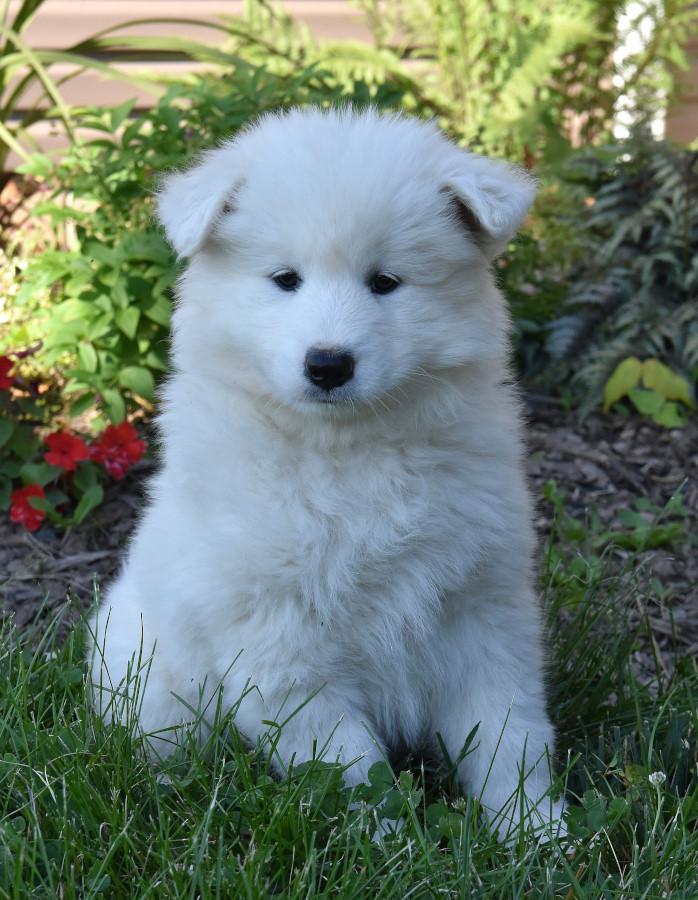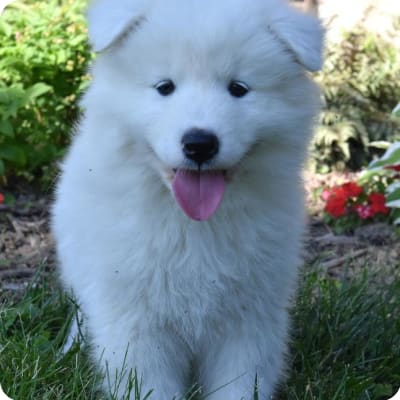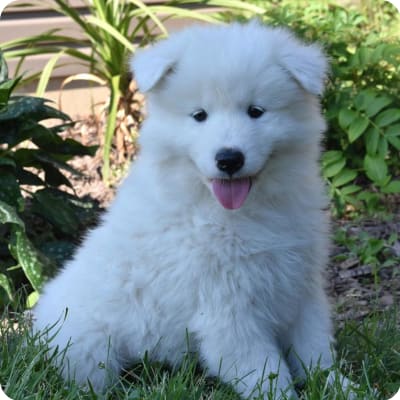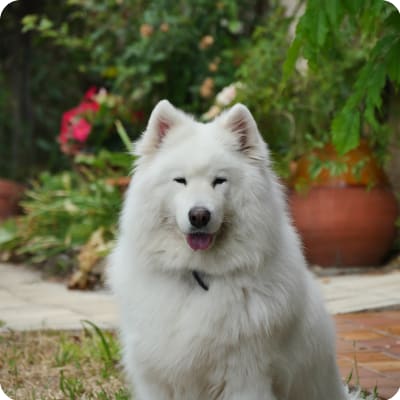Samoyed Puppies

A fun-loving, loyal, and outgoing breed
Samoyeds are the perfect combination of beauty and functionality. They are intelligent, social, and love attention, especially from their owners. They are also mischevious, a trait amplifyed by their perpetual smile.
Samoyed At a Glance




Samoyed At a Glance
- Size: 19"-24", 35-65 lbs.
- Lifespan: 12-14 years
- Energy Level: high
- Coat: Long, harsh outer coat with a soft, thick undercoat
- Shedding: heavy
- Hypoallergenic: Yes
- Dog Group: Working
- Common Nicknames: Sammy
Samoyed Breed Guide
Learn More About Samoyeds


